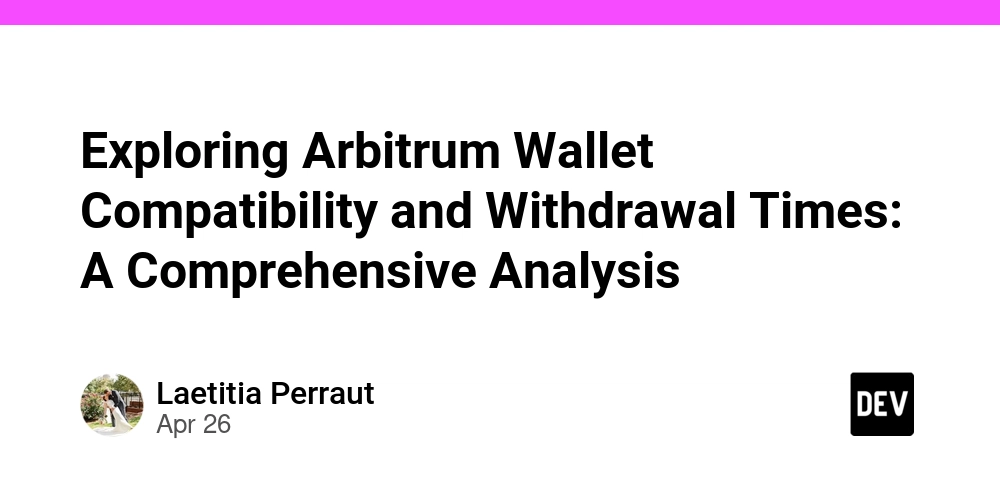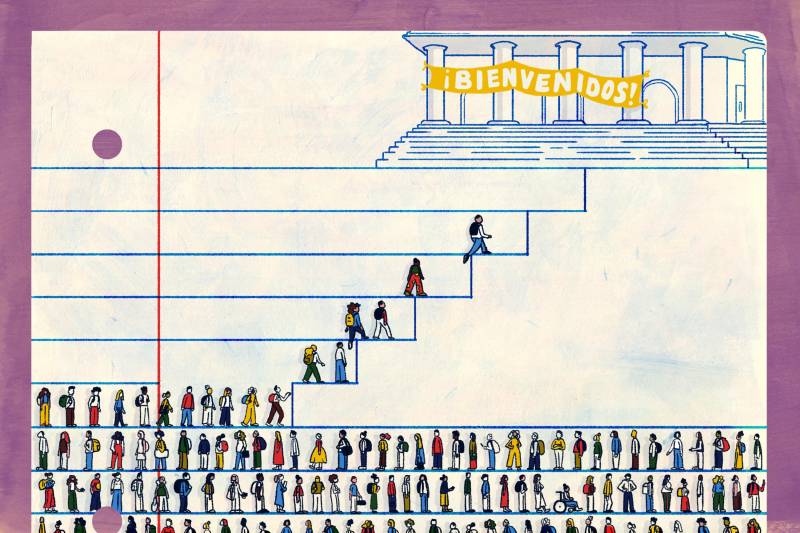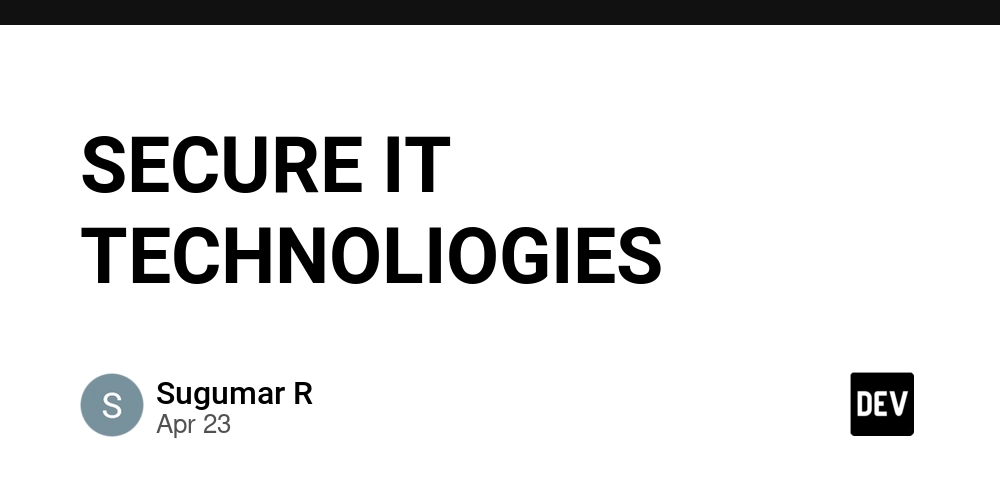Exploring Arbitrum Wallet Compatibility and Withdrawal Times: A Comprehensive Analysis
Abstract In this blog post, we explore the inner workings of Arbitrum—a leading Layer 2 scaling solution for Ethereum—focusing on wallet compatibility and the intricacies of withdrawal times. We detail how innovative technologies such as optimistic rollups and the seven-day challenge period balance speed with security. By breaking down the background, core features, practical applications in NFT marketplaces and DeFi, challenges, and future outlook, this article aims to serve as a one-stop resource for developers, crypto enthusiasts, and open-source advocates. We include tables, bullet lists, and expertly woven backlinks (e.g., Original Article) to enrich the reader’s understanding of Arbitrum and its role in the evolving blockchain ecosystem. Introduction Arbitrum has emerged as a key player in addressing scalability concerns on Ethereum, providing a solution that not only reduces gas fees but also enhances user experience through robust wallet compatibility. This innovative Layer 2 solution employs optimistic rollups to shift the computational burden off-chain while maintaining Ethereum’s trusted security standards. As blockchain technology evolves, understanding the balance between rapid transaction processing and secure asset management is essential—especially for developers working with NFTs, decentralized finance (DeFi), and open-source projects. This post will delve into how Arbitrum achieves this balance by explaining its technical mechanisms, why it matters to the broader blockchain ecosystem, and how wallet integrations with platforms like MetaMask, Trust Wallet, Ledger, and Trezor add tremendous value to the user experience. We will explore detailed aspects such as transaction batching, challenge periods for withdrawal validations, and challenges that come with bridging assets across networks. For more technical deep dives, please refer to our Original Article and other related resources like Arbitrum Wallet Compatibility and Arbitrum Withdrawal Times. Background and Context Ethereum’s popularity has led to significant issues such as network congestion and high gas fees. As the demand for decentralized applications soared, developers sought methods to improve scalability while preserving decentralized security. Arbitrum was introduced to address these challenges by moving many of the computational tasks off-chain through an innovative mechanism called optimistic rollups. Scalability Issues and the Need for Solutions Ethereum’s success in powering smart contracts and decentralized applications came with its own limitations. As the network grew, so did its transaction volumes, which resulted in slower processing times and increased fees. In response to these challenges, the blockchain community experimented with different scaling solutions including state channels, sidechains, and rollups. Among these, Arbitrum quickly gained traction because it leverages optimistic rollups that bundle transactions off-chain and post a condensed version on the main blockchain, thus enabling faster and cheaper operations. How Arbitrum Works At the core, Arbitrum processes transactions off-chain and aggregates them before committing their final state to Ethereum. A significant component of its security model is the seven-day challenge period. During this period, validators can examine bundled transactions and challenge any that appear fraudulent. This method not only minimizes the number of on-chain transactions but also ensures that no malicious activity goes unnoticed. Through this design, Arbitrum effectively reduces gas fees while maintaining the trustless security of Ethereum. Wallet Compatibility and Ecosystem Growth Arbitrum’s broad compatibility with popular wallets such as MetaMask, Trust Wallet, Ledger, and Trezor drives its adoption. These integrations allow users to manage their assets seamlessly, secure interactions with various DApps, and maintain cross-chain interoperability. This has been a key factor in attracting the NFT and DeFi communities, which demand both cost-efficient transactions and secure wallet management. Additionally, the open-source ethos behind Arbitrum fosters a collaborative environment where developers continuously contribute to network improvements. Open-source licensing—see for example the Copyleft Licenses Ultimate Guide—plays a crucial role in enabling transparency, community trust, and rapid innovation. Core Concepts and Features Understanding Arbitrum involves dissecting several technical aspects that work in harmony to deliver a superior scaling experience. 1. Optimistic Rollups and the Challenge Period Arbitrum’s innovative optimistic rollup technology is designed to process transactions assuming they are valid, thereby reducing computational overhead. A brief summary of this process: Batching Transactions: Transactions are grouped off-chain and later submitted to Ethereum.

Abstract
In this blog post, we explore the inner workings of Arbitrum—a leading Layer 2 scaling solution for Ethereum—focusing on wallet compatibility and the intricacies of withdrawal times. We detail how innovative technologies such as optimistic rollups and the seven-day challenge period balance speed with security. By breaking down the background, core features, practical applications in NFT marketplaces and DeFi, challenges, and future outlook, this article aims to serve as a one-stop resource for developers, crypto enthusiasts, and open-source advocates. We include tables, bullet lists, and expertly woven backlinks (e.g., Original Article) to enrich the reader’s understanding of Arbitrum and its role in the evolving blockchain ecosystem.
Introduction
Arbitrum has emerged as a key player in addressing scalability concerns on Ethereum, providing a solution that not only reduces gas fees but also enhances user experience through robust wallet compatibility. This innovative Layer 2 solution employs optimistic rollups to shift the computational burden off-chain while maintaining Ethereum’s trusted security standards. As blockchain technology evolves, understanding the balance between rapid transaction processing and secure asset management is essential—especially for developers working with NFTs, decentralized finance (DeFi), and open-source projects.
This post will delve into how Arbitrum achieves this balance by explaining its technical mechanisms, why it matters to the broader blockchain ecosystem, and how wallet integrations with platforms like MetaMask, Trust Wallet, Ledger, and Trezor add tremendous value to the user experience. We will explore detailed aspects such as transaction batching, challenge periods for withdrawal validations, and challenges that come with bridging assets across networks. For more technical deep dives, please refer to our Original Article and other related resources like Arbitrum Wallet Compatibility and Arbitrum Withdrawal Times.
Background and Context
Ethereum’s popularity has led to significant issues such as network congestion and high gas fees. As the demand for decentralized applications soared, developers sought methods to improve scalability while preserving decentralized security. Arbitrum was introduced to address these challenges by moving many of the computational tasks off-chain through an innovative mechanism called optimistic rollups.
Scalability Issues and the Need for Solutions
Ethereum’s success in powering smart contracts and decentralized applications came with its own limitations. As the network grew, so did its transaction volumes, which resulted in slower processing times and increased fees. In response to these challenges, the blockchain community experimented with different scaling solutions including state channels, sidechains, and rollups. Among these, Arbitrum quickly gained traction because it leverages optimistic rollups that bundle transactions off-chain and post a condensed version on the main blockchain, thus enabling faster and cheaper operations.
How Arbitrum Works
At the core, Arbitrum processes transactions off-chain and aggregates them before committing their final state to Ethereum. A significant component of its security model is the seven-day challenge period. During this period, validators can examine bundled transactions and challenge any that appear fraudulent. This method not only minimizes the number of on-chain transactions but also ensures that no malicious activity goes unnoticed. Through this design, Arbitrum effectively reduces gas fees while maintaining the trustless security of Ethereum.
Wallet Compatibility and Ecosystem Growth
Arbitrum’s broad compatibility with popular wallets such as MetaMask, Trust Wallet, Ledger, and Trezor drives its adoption. These integrations allow users to manage their assets seamlessly, secure interactions with various DApps, and maintain cross-chain interoperability. This has been a key factor in attracting the NFT and DeFi communities, which demand both cost-efficient transactions and secure wallet management.
Additionally, the open-source ethos behind Arbitrum fosters a collaborative environment where developers continuously contribute to network improvements. Open-source licensing—see for example the Copyleft Licenses Ultimate Guide—plays a crucial role in enabling transparency, community trust, and rapid innovation.
Core Concepts and Features
Understanding Arbitrum involves dissecting several technical aspects that work in harmony to deliver a superior scaling experience.
1. Optimistic Rollups and the Challenge Period
Arbitrum’s innovative optimistic rollup technology is designed to process transactions assuming they are valid, thereby reducing computational overhead. A brief summary of this process:
- Batching Transactions: Transactions are grouped off-chain and later submitted to Ethereum.
- Security Through Dispute Resolution: A seven-day challenge period allows validators to dispute any transactions suspected to be fraudulent.
- Finality: Once the challenge period expires without valid disputes, the transaction batch is confirmed on Ethereum.
This trade-off between speed and security has proven effective in maintaining Ethereum’s robust security while significantly reducing operational costs.
2. Wallet Integration and Compatibility
Arbitrum’s design emphasizes broad compatibility with many wallets to enhance usability. Below is a summary table outlining key wallet integrations:
| Wallet | Compatibility | Key Features |
|---|---|---|
| MetaMask | Fully supported | Easy custom RPC setup; excellent DApp integration |
| Trust Wallet | Supported | Multi-chain support; intuitive user experience |
| Ledger/Trezor | Supported via bridge apps | Enhanced security through offline key storage |
| Rainbow/Argent | Native support | Modern design; streamlined interactions with NFTs |
3. Transaction Processing Efficiency
Arbitrum significantly improves transaction throughput by processing transactions in batches. This batching reduces the gas expenditure per transaction, reducing costs significantly. Moreover, optimized algorithms help in ordering and categorizing transactions, ensuring that even during periods of high volume, the network remains efficient.
4. Enhanced Security Mechanisms
Security is at the forefront of Arbitrum’s design:
- Dispute Resolution: A system where validators can challenge any suspicious activity during the challenge period.
- Hardware Wallet Support: Enhanced security via compatibility with hardware wallets ensures that private keys remain offline.
- Regular Audits: Continuous code audits and community-based reviews keep the system robust and transparent.
Below is a bullet list highlighting Arbitrum’s key security features:
- Optimistic Rollup Mechanism: Reducing on-chain data and lowering gas usage.
- Seven-Day Challenge Period: Allowing ample time for validators to dispute suspicious transactions.
- Batch Verification: Ensuring efficiency in processing large groups of transactions.
- Strong Wallet Security: Integration with hardware wallets like Ledger and Trezor.
- Transparent Open-Source Governance: Continuous community involvement and regular audits.
5. Open-Source Ecosystem and Funding Models
Arbitrum thrives on a vibrant open-source community where continuous contributions help improve everything from smart contract security to user interface design. Funding models such as grants and sponsorships are commonly used to maintain and develop new features. This model is similar to trends seen in projects discussed in posts like Funding Open Source Software – Sustaining the Backbone of Modern Digital Innovation.
6. Interoperability with DeFi and NFT Platforms
The interconnected nature of today's blockchain landscape means Arbitrum’s interoperability is particularly beneficial for DeFi protocols and NFT marketplaces. Platforms that require rapid, low-cost transactions find Arbitrum indispensable. Its ability to facilitate token swaps, smart contract deployments, and liquidity provision further cements its role in the ecosystem. For deep dives on DeFi applications on Arbitrum, consider reading Arbitrum DeFi.
Applications and Use Cases
Arbitrum’s technology is not just theoretical—it is actively transforming several sectors:
1. NFT Marketplaces
NFT platforms thrive on quick, cost-effective transactions. Low gas fees allow digital artists and collectors to mint, buy, and sell NFTs efficiently. A practical example includes:
- Minting on Arbitrum: Artists can mint NFTs with minimal fees, making it cost-effective to produce digital art.
- Seamless Wallet Integration: Platforms integrated with MetaMask or Trust Wallet simplify the process for users.
- Withdrawal to Mainnet: If needed, users can initiate secure withdrawals, even with a challenge period.
For a real-world demonstration, check out the World of Women NFT Collection.
2. Decentralized Finance (DeFi) Protocols
DeFi applications benefit greatly from Arbitrum’s enhanced transaction throughput and lower costs. Here are some examples of its applications within DeFi:
- Lending Platforms: Faster transaction confirmation speeds improve user experience and security for borrowers and lenders.
- Decentralized Exchanges: Reduced fees facilitate efficient token swaps and liquidity pooling.
- Yield Farming: Enhanced efficiency ensures that strategies remain cost-effective and timely.
A detailed discussion of these integrations can be found in Arbitrum Ecosystem and related articles.
3. Cross-Network Wallet Integrations
The seamless switch between Ethereum mainnet and Arbitrum is made possible by robust wallet integration. This enables users to hold tokens across various networks while enjoying lower fees and higher security. Changes in the custom RPC settings for wallets like MetaMask ensure that these transitions are smooth.
Practical Implementation Example
Consider a decentralized art platform where:
- The Artist mints an NFT on Arbitrum, avoiding high gas fees.
- The Collector uses MetaMask to purchase the NFT, benefiting from a secure and user-friendly interface.
- Withdrawal Option: If the collector wishes to transfer the NFT back to Ethereum, they can initiate a withdrawal that, although subject to a seven-day challenge period, is secure and robust.
Additional Developer Resources
For insights on developer community support and open-source funding, you might enjoy reading:
- Scaling Ethereum with Arbitrum – Transforming Blockchain Scalability
- Navigating Open Source Funding for Small Projects
Challenges and Limitations
Despite its numerous benefits, Arbitrum is not without its challenges:
1. Withdrawal Challenge Period
The seven-day challenge period is essential for security but can delay the withdrawal process. For users expecting near-instant liquidity, this waiting period might pose an inconvenience, especially during periods of urgent need.
2. Network Congestion and Gas Fee Variability
Arbitrum significantly reduces gas fees, but fluctuations on the Ethereum mainnet can impact overall transaction times. During periods of heightened congestion, finalizing off-chain transactions may also be delayed, indirectly affecting performance.
3. Integration Complexities
Although popular wallets offer support, setting up a custom RPC or switching networks can be confusing for users new to cryptocurrency. Simplifying the user interface remains an ongoing task for developers, who continue to improve the integration processes.
4. Bridging Risks and Interoperability Issues
Interoperability between Ethereum and Arbitrum introduces potential risks. Bridging mechanisms need to ensure that assets are not compromised during transfers. Users must choose trustworthy bridge solutions to mitigate these risks.
5. Governance and Open-Source Development
The decentralized nature of open-source governance can sometimes slow decision-making processes. Delays in security audits and consensus updates are challenges that require continued community engagement and efficient project management.
Below is a bullet list summarizing these challenges:
- Delayed Withdrawals: The mandatory seven-day challenge period.
- Gas Fee Fluctuations: Ethereum congestion can indirectly affect Arbitrum’s performance.
- User Interface Complexity: Challenges for beginners when setting up wallet integrations.
- Bridging Vulnerabilities: Risks associated with asset transfers between networks.
- Slower Governance Processes: Open-source development pace can sometimes introduce delays.
Future Outlook and Innovations
Looking ahead, several trends indicate a promising future for Arbitrum and similar Layer 2 solutions.
1. Protocol Upgrades
Ongoing research into cryptographic techniques such as zero-knowledge proofs could potentially reduce or even eliminate the lengthy challenge period without compromising security. Faster, near-instant withdrawal methods are on the horizon, which could make user experiences even more seamless.
2. Cross-Chain Interoperability
Enhanced bridging protocols will promote smoother interactions among Ethereum, Arbitrum, and other emerging networks. Efforts to optimize cross-chain transactions will further integrate Arbitrum into the broader decentralized ecosystem, attracting more users and developers.
3. Improved Wallet Experience
Wallet providers, including MetaMask and Trust Wallet, are developing in-built support for Layer 2 solutions. This will reduce the need for cumbersome manual configuration and appeal to non-technical users. The continued evolution of user interfaces promises to widen Arbitrum’s adoption.
4. Open-Source Funding and Community Governance
Innovative funding models such as grants, token rewards, and sponsorships will continue to drive the Arbitrum ecosystem. As more developers join the open-source movement, transparency and rapid innovation will help overcome many current limitations.
5. Regulatory and Security Advances
With regulators gradually clarifying the legal frameworks surrounding blockchain technology, future guidelines may facilitate faster yet secure operations. This regulatory clarity will likely boost institutional adoption and sustain market confidence.
For additional perspectives on open-source funding and blockchain scalability, check out:
Summary
Arbitrum stands as a transformative solution in the quest for blockchain scalability. By utilizing optimistic rollups, a robust challenge period mechanism, and broad wallet compatibility, Arbitrum successfully reduces gas fees and ensures secure, efficient transactions. While challenges such as delayed withdrawals and integration complexities persist, continuous technological advancements and community engagement promise a bright future for Layer 2 solutions.
In summary, key takeaways include:
- Innovative Technology: Arbitrum’s optimistic rollups and challenge period combine speed with security.
- Extensive Wallet Support: Enhanced integration with popular wallets streamlines the user experience.
- Practical Use Cases: From NFT marketplaces to DeFi protocols, real-world applications validate Arbitrum’s potential.
- Ongoing Evolution: Future protocol upgrades, regulatory clarity, and improved interoperability will further cement Arbitrum’s role in the blockchain ecosystem.
As blockchain technology and open-source projects continue to evolve, staying informed is crucial. Whether you are a developer, NFT creator, or a DeFi enthusiast, Arbitrum’s ecosystem presents a promising landscape built on innovation, security, and decentralized collaboration.
For further insights and ongoing discussions about Arbitrum and supporting technologies, feel free to explore related resources such as Arbitrum Scaling Solution and Arbitrum DeFi. Additionally, engaging with community posts like Scaling Ethereum with Arbitrum – Transforming Blockchain Scalability can provide further clarity on the innovations behind this dynamic technology.
Embrace the future of cost-effective, secure blockchain transactions with Arbitrum and join the continued evolution of decentralized finance and digital asset management.
Happy innovating!
Note: This comprehensive guide is intended for developers, blockchain enthusiasts, and open-source advocates looking to leverage Arbitrum’s capabilities in their projects. The integration of detailed tables, bullet lists, and resourceful hyperlinks ensures the content is easily scannable and SEO-friendly for both humans and search engines.





































































